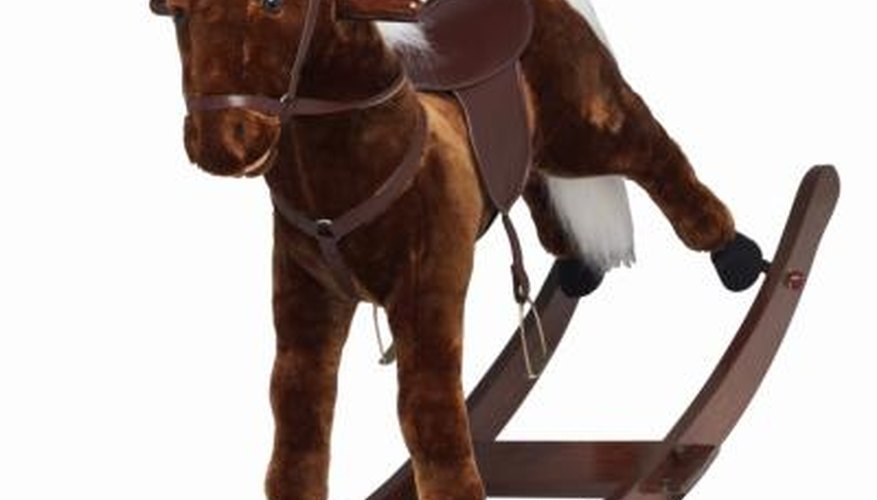Adding a mane to your rocking horse is an important finishing touch. A realistically painted and carved horse looks best with a traditional mane of horsehair whereas wool is a good material to use with fabric horses. Fantasy or novelty horses can sport manes made of anything from gold cord to ribbon, depending on the effect you are trying to achieve. Adding a mane can transform your rocking horse's finished look, so it is worth putting some thought into how to incorporate it into the design.
Integral Manes
Rocking horses made from hard materials such as wood and plastic sometimes have integral manes carved or moulded into the head and neck. These can then be painted or coloured to represent hair. The advantage of these manes is that will not detach from the horse and therefore do not represent a choking hazard for very young children. However, they look less realistic than hair manes and do not provide a good handhold for young riders.
- Rocking horses made from hard materials such as wood and plastic sometimes have integral manes carved or moulded into the head and neck.
- However, they look less realistic than hair manes and do not provide a good handhold for young riders.
Real and Fake Hair Manes
A traditional wooden carved and painted horse normally has a mane made with real or synthetic horse hair, which is available in different colours. The hair is usually supplied in bundles which are glued into a groove in the horse's neck. Alternatively, real hair is attached to a strip of hide which is then glued on in one piece. These manes look realistic, but are often not tough enough to stand up to rough handling.
- A traditional wooden carved and painted horse normally has a mane made with real or synthetic horse hair, which is available in different colours.
Wool, Fabric and Ribbon
Rocking horses designed for very young children are often made from a metal frame, covered in layers of wadding and fabric. Fabric rocking horses often have manes made from wool stitched along the neck line. Alternatives manes include fabric or leather cut into strips and stitched along the neck, and ribbons. The advantage of these soft manes is that they are well attached and unlikely to come off; however they do present a less realistic appearance than hair.
- Rocking horses designed for very young children are often made from a metal frame, covered in layers of wadding and fabric.
- Alternatives manes include fabric or leather cut into strips and stitched along the neck, and ribbons.
Fantasy Manes
Some crafters like to produce rocking horses with fantasy colour schemes, for example painting their horses with a night sky or Stars and Stripes theme. These horses are not required to look realistic, so the mane can be made out of a wide range of materials. One idea is linen fabric, cut into strips and painted with fabric paint. Alternatively you could use gold or silver cord, or thread strung with beads. You could also try plaits made from three different colours of wool, or even overlapping feathers glued into place.
- Some crafters like to produce rocking horses with fantasy colour schemes, for example painting their horses with a night sky or Stars and Stripes theme.
- You could also try plaits made from three different colours of wool, or even overlapping feathers glued into place.
